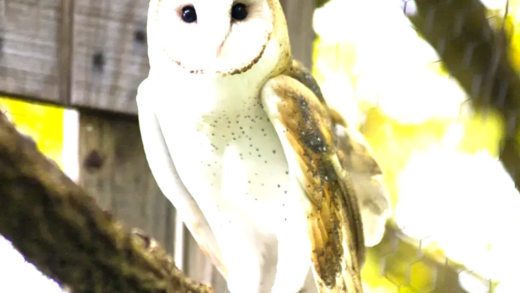Rare cat breeds, such as the Peterbald and LaPerm, are unique due to their specific traits and limited availability. Their rarity often stems from genetic factors, historical events, and breeding practices. Understanding the cost, care, and historical background can enhance the experience of owning these special cats. Each breed brings its own set of characteristics and health concerns, making them distinct from common breeds. Their unique appeal lies in their beauty, personality, and the stories they carry.
Meet the Rarest Cat Breeds
Rare cat breeds are fascinating creatures that often go unnoticed in the world of felines. These breeds are not just uncommon; they possess unique characteristics and histories that set them apart. From the elusive Sokoke to the stunning LaPerm, each rare breed has a story to tell. The rarity of these breeds often stems from a combination of limited breeding practices, specific geographical origins, and sometimes, peculiar traits that do not appeal to the mass market.
What makes these breeds rare? Often, it is the result of stringent breeding standards or a small gene pool. For example, the American Wirehair is known for its distinct wiry coat, which is a genetic mutation. This mutation, while unique, limits the number of cats that can be bred with this trait. Understanding these factors can help potential owners appreciate the rarity and value of these beautiful felines.
Why Are They Considered Rare?
Several factors contribute to the classification of certain breeds as rare cat breeds. Primarily, it boils down to genetics, breeding practices, and geographical limitations. For instance, breeds like the Kurilian Bobtail are indigenous to specific regions, making them less accessible globally. Additionally, some breeds are the result of specific mutations, which may not always be favored in breeding programs.
Another reason is the low population numbers. Many rare breeds have fewer than a few thousand registered individuals worldwide. This limited availability can be due to various historical events, such as wars or natural disasters, which decimate populations. Conservation efforts are crucial for maintaining the health and genetics of these breeds, but they often struggle to gain traction.
Unique Characteristics
Each rare cat breed boasts unique characteristics that make them stand out. For example, the Peterbald is known for its hairless appearance, resulting from a natural genetic mutation. This breed is not only striking in looks but also has a friendly and affectionate personality. Similarly, the Bambino, a cross between the Sphynx and the Munchkin, features short legs and a hairless body, making it one of the most unusual cats you’ll ever meet.
- Peterbald: Hairless with a friendly demeanor.
- Bambino: Short-legged and affectionate.
- LaPerm: Curly fur that’s soft to the touch.
- Sokoke: Distinctive spotted coat and playful nature.
These unique traits not only make them visually appealing but also give them distinct personalities and care requirements, setting them apart from more common breeds. Understanding these characteristics can help potential owners choose the right cat for their lifestyle.
Health Risks of Rare Cat Breeds
Rare cat breeds often come with specific health concerns due to their limited genetic diversity. For instance, the Peterbald is prone to skin issues since they lack fur, making their skin more susceptible to irritations and infections. Similarly, the Bambino can face spinal problems due to their short legs. It’s crucial for potential owners to be aware of these health risks.
Here are some common health issues associated with rare breeds:
- Peterbald: Skin infections and sensitivity to temperature changes.
- Bambino: Spine-related issues and joint problems.
- LaPerm: Potential for ear infections due to curly fur trapping moisture.
- Sokoke: Genetic disorders related to their unique coat patterns.
Regular veterinary check-ups and proper care can mitigate these risks, ensuring your rare cat lives a long, healthy life.
Care Needs for Unique Breeds
Caring for rare cat breeds requires a tailored approach. Each breed has specific grooming, diet, and exercise needs that differ from more common cats. For example, the Peterbald needs regular skin cleaning to prevent oils from building up, while the LaPerm requires routine grooming to maintain its curly coat.
Here’s a breakdown of care requirements:
- Grooming:
– Peterbald: Weekly skin cleans.
– Bambino: Minimal grooming needed.
– LaPerm: Regular brushing to prevent matting.
– Sokoke: Occasional brushing to maintain coat health. - Diet:
– High-quality cat food tailored to their specific needs.
– Consult a vet for dietary recommendations based on their breed and health. - Exercise:
– Regular playtime to keep them active and mentally stimulated.
– Interactive toys can be beneficial.
Understanding these care needs will help you provide the best environment for your rare feline companion.
Where to Find Rare Breeds
If you’re looking to adopt or buy a rare cat breed, it’s essential to know where to look. Many of these breeds are available through specialized breeders or rescue organizations that focus on rare breeds. Websites like Petfinder and Adopt a Pet can help you find these unique cats in shelters or through adoption services.
Here are some options for finding rare cat breeds:
- Specialized Breeders:
– Look for breeders who focus specifically on rare breeds.
– Ensure they follow ethical breeding practices. - Rescue Organizations:
– Many organizations rescue rare breeds and need loving homes.
– Check local shelters and breed-specific rescues. - Online Resources:
– Websites dedicated to cat adoption often list rare breeds.
– Social media groups can also connect you with owners and breeders.
Doing thorough research can help you find the perfect rare cat breed for your home.
Cost of Rare Breeds
Rare cat breeds come with a price tag that can vary significantly based on factors like demand, rarity, and breeder reputation. Generally, the cost of these unique felines can range from a few hundred to several thousand dollars. For example, a Peterbald might cost between $1,500 to $3,000, while a Bambino can be found for around $1,000 to $2,500.
Here’s a general price guide for some rare cat breeds:
- Peterbald: $1,500 – $3,000
- Bambino: $1,000 – $2,500
- LaPerm: $800 – $1,500
- Sokoke: $1,200 – $2,000
In addition to the initial purchase price, potential owners should also consider ongoing costs such as high-quality food, regular veterinary care, and grooming supplies. Being financially prepared will ensure that you can provide the best care for your rare feline companion.
Historical Background
The history of rare cat breeds is as captivating as the cats themselves. Many of these breeds have origins tied to specific cultures or geographical regions. For instance, the Kurilian Bobtail hails from the Kuril Islands, where it was revered for its hunting skills. Similarly, the Sokoke breed originates from the Sokoke area in Kenya, where it has adapted to local conditions over generations.
Understanding the historical context of these breeds enriches the experience of owning one. Many rare breeds have faced near extinction due to environmental changes and human activities. Conservation efforts today aim to preserve these unique breeds, ensuring that their fascinating legacies continue.
Comparing to Common Breeds
When analyzing rare cat breeds compared to common breeds, several differences emerge. For example, common breeds like the Domestic Shorthair are widely available and often less expensive. In contrast, rare breeds tend to have unique traits, histories, and sometimes specific health concerns.
Here’s a brief comparison:
- Availability: Rare breeds are less accessible than common ones.
- Price: Rare breeds generally cost more due to their scarcity.
- Health Issues: Rare breeds may have specific health concerns not commonly seen in typical breeds.
- Personality: Many rare breeds exhibit distinct personalities influenced by their unique traits.
Recognizing these differences can guide potential owners in choosing the right feline companion that suits their lifestyle.
What Makes Them Special
The allure of rare cat breeds lies in their unique qualities. Each breed possesses distinct characteristics that make them not just pets, but also cherished companions. For instance, the LaPerm with its curly fur is not only visually striking but also requires less grooming than one might think. Similarly, the affectionate nature of the Bambino makes it a delightful addition to any home.
What makes these breeds particularly special includes:
- Unique Appearance: From the hairless Peterbald to the curly LaPerm, their looks are captivating.
- Distinct Personalities: Many rare breeds have charming quirks that endear them to owners.
- Historical Significance: Their rich histories add depth to their ownership experience.
For enthusiasts, owning a rare cat breed is not just about having a pet; it’s about embracing a piece of history and uniqueness.





Comments are closed.